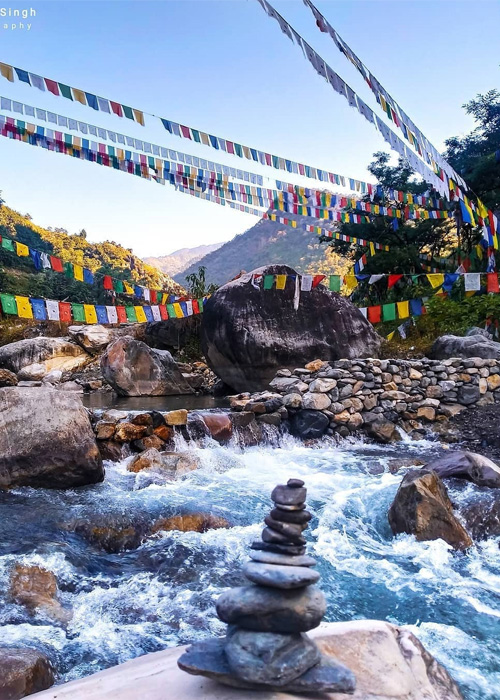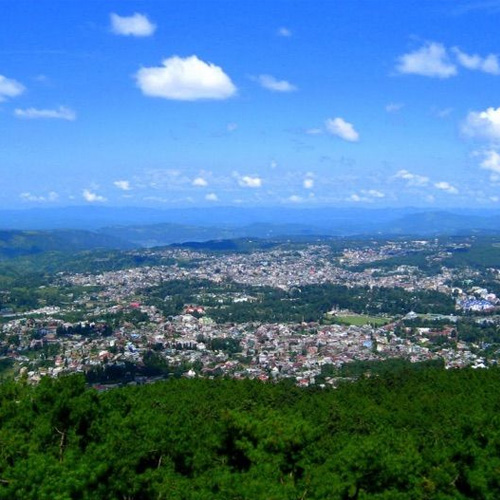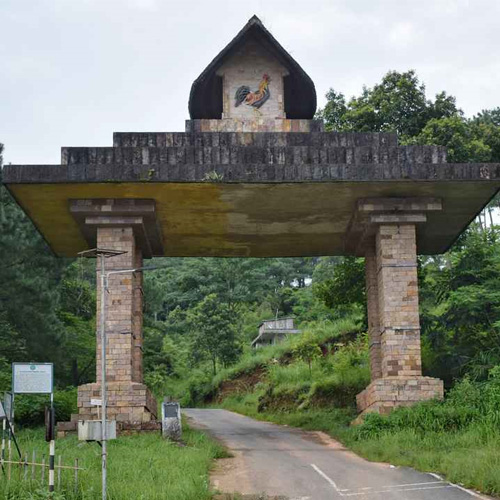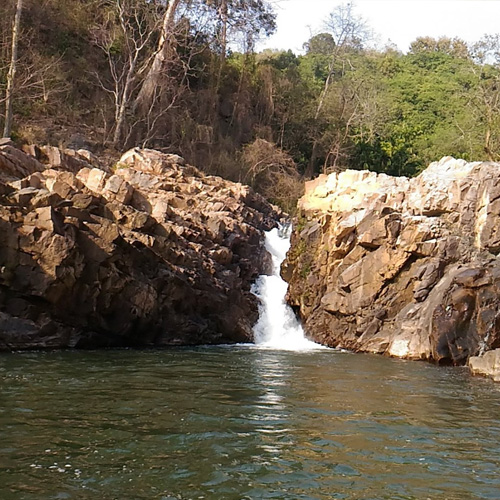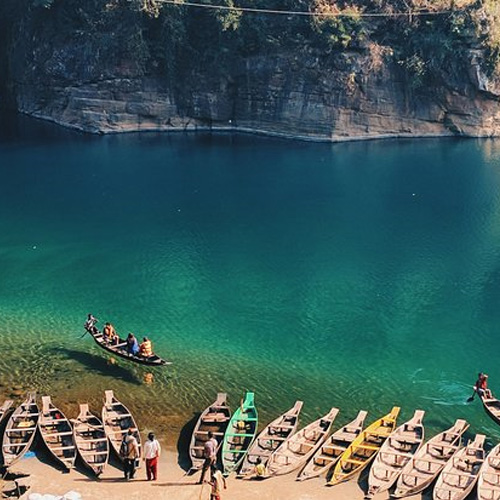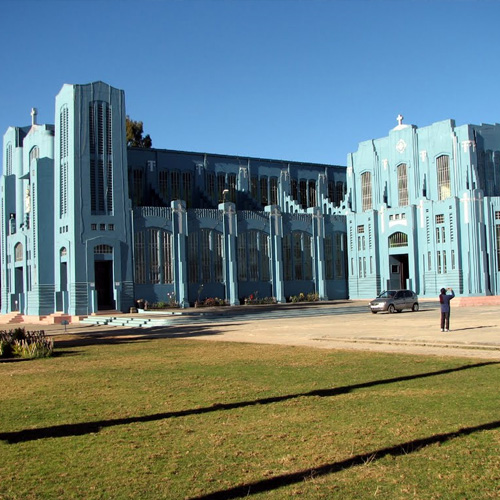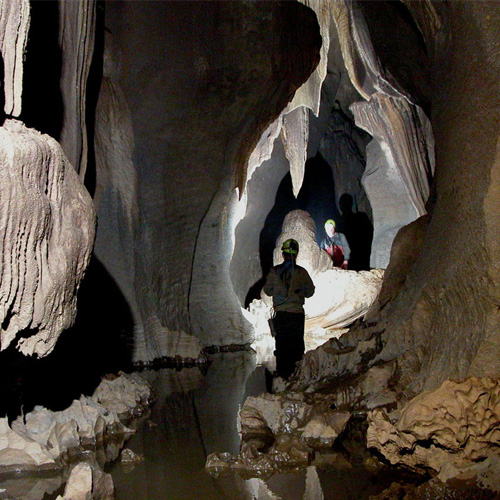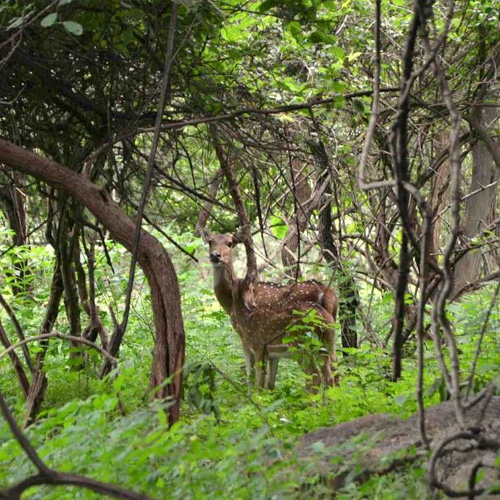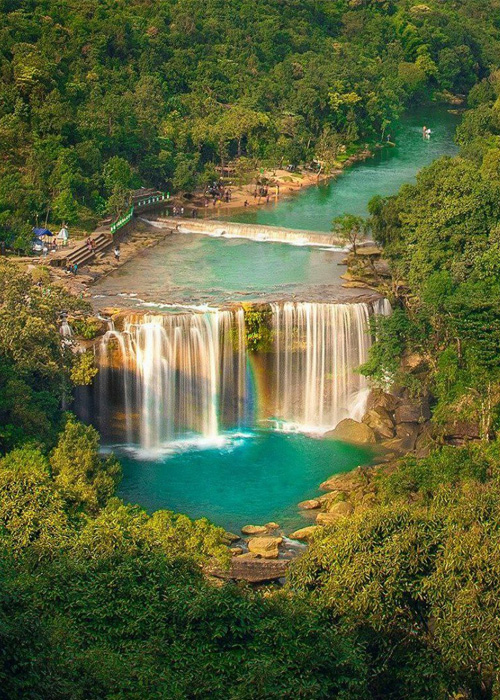About Meghalaya
Tura is a city and a municipality in West Garo Hills district in the Indian state of Meghalaya. One of the largest towns in Meghalaya, Tura is a valley located at the foothills of the Tura Hills and right below the Tura Peak. The climate in Tura is moderate throughout the year and has a large number of interesting and unexplored areas. The native god Durama was believed to reside in the hills. The name Tura is said to be a corruption (by the British) of the god's name.
It is part of the Siwalik Hills ranges. It is 220 kilometres from the nearest city Guwahati and is also the district capital of the West Garo Hills district. It is filled with small rivulets and green valleys all around. The principal languages are Garo, ( Hajong language/Hajong ), Koch language/Koch, Bengali, Hindi and English. In 1973, the town was made the seat of the Roman Catholic Diocese of Tura.
The capital city of Shillong is 323 kilometres away and can be accessed via buses or the shuttle helicopter service.
Tura is a cultural and administrative centre of the Garo tribes. To visit popular tourist destinations such as Balpakram, Nokrek and Siju cave, one needs to pass through this town.
The State of Meghalaya is situated on the north east of India. In the hills of eastern sub-Himalayas is Meghalaya, one of the most beautiful state in the country. Nature has blessed her with abundant rainfall, sun-shine, virgin forests, high plateaus, tumbling waterfalls, crystal clear rivers, meandering streamlets and above all with sturdy, intelligent and hospitable people.
Emergence of Meghalaya as an Autonomous State on 2nd April 1970 and as a full-fledged State on 21st January 1972 marked the beginning of a new era of the geo-political history of North Eastern India. It also marked the triumph of peaceful democratic negotiations, mutual understanding and victory over violence and intrigue.
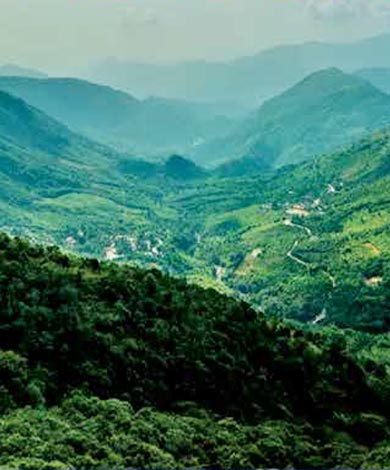
How to Reach Tura
By Air
Guwahati is the nearest airport which is only 128kms from Shillong, the capital city of Meghalaya which can be reached by bus or car. Daily buses also connect Shillong with Guwahati airport. Pawan Hans Helicopters Ltd, under the aegis of the Government of Meghalaya, has commenced regular helicopter flights connecting Shillong and Tura to Guwahati. A helicopter service operates between Guwahati, Shillong (30 min) and Tura (60 min), which is convenient and economical. Some helicopters land at upper Shillong and others at Umroi Helipad in the downtown.
By Road
Ranchi is linked to every important part of the country by road. Ranchi is located at the junction of National Highways 23 and 33. Extensive road network is under way to facilitate road transport and make Jharkhand accessible from any corner of the country. Buses (Birsa Khadgarha and Ratu bus stands) are available to take you to any part of the city 24/7.
By Rail
Ranchi is linked to North, East, West and South by rail. The main Railway Station in Jharkhand is also located in Ranchi. South Eastern Railways connect it to other major cities like Patna, Rourkela. Another important railway station is in Hazaribagh.
Resources
Food
There are many varieties of food available, the common one is the traditional Garo food. Traditional Garo food includes boiled rice, different preparations of Pork, beef, chicken and dry fish. Some of the delicacies of Garo Food are Nakam Bitchi (it is dry fish made with chillies and soda), Wak Pura (it is Pork cooked with crushed rice).
Major Mineral Resources
Coal, Limestone, Sillimanite, Dolomite, Fireclay, Felspar, Quartz and Glass-sand.
Principal Forest Produce
Timber, Bamboo, Reed, Cane, Ipecac, Medicinal herbs and Plants, Cinnamon, Lemon-grass and Thatch-grass.
Principal Agricultural Products
Rice, Maize, Patato, Cotton, Orange, Ginger, Tezpata, Arecanut, Jute, Mesta, Banana and Pineapple.
Wild Life
Animals: Elephant, Tiger, Leopard, Bear, Panther, Wild Boar, etc.
Birds: Duck, Hornbill, Myna, etc.
Annual Celebrations
Wanagala
It is a traditional Garo dance; celebrated after harvesting. Wangala is best showcased at the 100 Drums festival which takes place annually, 30 km away from Tura in a place called, Asanang. The men and women are dressed in traditional attire and they dance to beat of the 100 drums.
Christmas
It is celebrated in a grand and extravagant way. The party spirit pervades throughout starts from Christmas and continues even after the New Year celebration. So, the entire celebration last for more than a week. The occasion is filled with carol songs, dinner parties, social gatherings and many more events. In short, a week long of Merry making.
Durga Puja
It is celebrated in the months of October and is celebrated in a grand fashion with 'pandals', 'dhak dhol' and the smell of 'dhoop' all over town. The number of idols The 'Bishorjon' is a colourful parade of trucks carrying the idols of the various pandals away at the end of the festivities.
